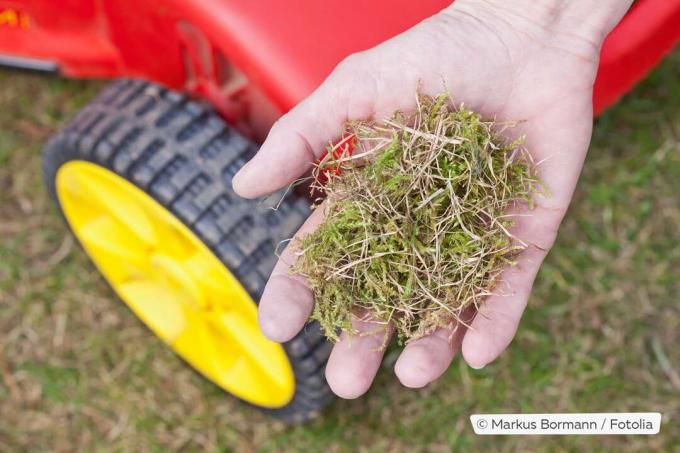
With moss-covered or matted lawns, scarifying is a solution to the problem. But be careful, if you carry out the measure too often, the treatment can damage the greenery in the garden. We tell you how often you should scarify.
In a nutshell
- Scarifying removes moss and thatch from the lawn
- once or scarify a maximum of twice a year
- ideally in spring and/or autumn
- only scarify dry soil
Table of contents
- Why scarify?
- frequency
- time
- weather
- frequently asked Questions
Why scarify?
As part of lawn care is scarified, if
- itself moss spreads on the lawn and/or
- the thatch is thicker than 5 millimeters.
Because both lead to a lawn growing poorly due to a lack of water and oxygen. The unfavorable growth conditions in turn mean that the formation of felt and moss continues. A vicious circle is created, which should be broken by scarifying.

A notice: Thatch is a layer of organic material. It usually consists of dead plant parts that remain on the lawn.
frequency
Scarifying is a measure that is carried out as needed. This means that the lawn is not thatched at regular intervals. If your lawn is neither matted nor covered in moss, you don't need to go to the scarifier at all - whether you bought it or not
rented - grasp. Because in this case you are weakening the grass more than you are promoting it.How often you need to scarify the lawn depends on its condition. If thatch and moss need to be removed, you should clean the lawn scarify once or at most twice a year.
time

The ideal time for scarifying is in the spring. A second time window opens in autumn. The daytime temperature should be between 15 and 20 degrees Celsius in every season. Therefore, according to the calendar, the times are as follows:
- Spring: late March to late May
- Autumn: mid-September to mid-October
weather
To ensure that the lawn tolerates treatment with the scarifier, you should pay attention to the following:
- only scarify dry grass
- Plan at least two rain-free days beforehand
A notice: There should be no frost in the days after scarifying. In autumn, heat and drought put a strain on the regeneration of the lawn. You should therefore choose a time window with mild temperatures.
frequently asked Questions
There is a simple trick to find out whether you should scarify. Pull a metal rake through the lawn without applying pressure. If moss and thatch get caught in the rake, you should scarify the lawn next spring or autumn. Located a lot weeds in the lawn, you should also use the scarifier.
For best results, trim the lawn to a length of two to three centimeters before scarifying mowing.
Although scarifying is for the health of the lawn, it will take time to recover afterwards. It usually takes a few weeks for the marks to disappear. During this regeneration period, you should take care of the lawn and only walk on it in exceptional cases.
After scarifying, you should make sure that the soil does not dry out. If there is no rain, you should keep the lawn well for the first three to four days after treatment water. After that, keep the lawn moist until it recovers.


